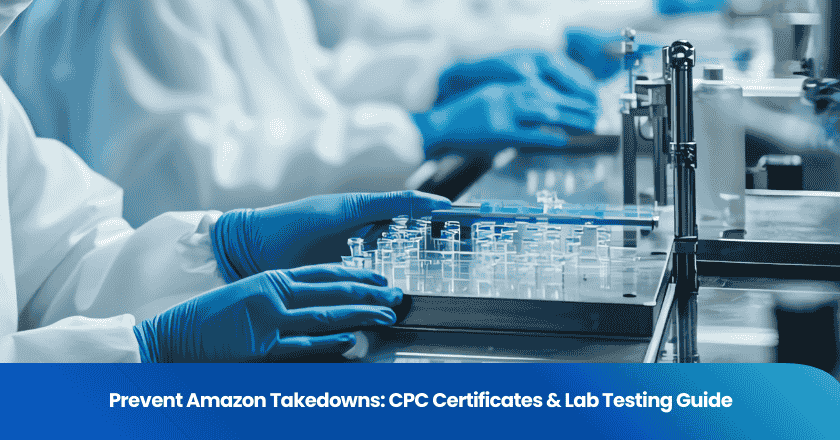
What is the textile industry?
The textile industry is a historical and extensive industrial field, involving the production and processing of fiber materials, yarn, fabric, and final textile products. It includes the processing of natural fibers (such as cotton, linen, silk, and wool), and also involves the production and application of chemical fibers.
The production process of the textile industry is complex, involving multiple steps such as spinning, weaving, printing and dyeing, and finishing of fibers, ultimately producing various clothing, household textiles, industrial textiles, etc. The final products involve the manufacture of clothing and household items, and extend to various fields such as medical, automotive, and aviation.
The textile industry is an important component of economic development, contributing to employment, export revenue, and technological progress.
What are textile manufacturers?
Textile manufacturers, as the core of the vast textile industry chain, are responsible for processing raw materials (such as fibers, yarns) into final textile products through a series of complex processes, meeting the diverse needs of the market.
High-quality textile manufacturers not only have advanced production equipment and technology, but also possess strong research and design capabilities, able to produce a variety of products according to market demand and consumer preferences.
Textile manufacturers occupy a central position in the entire textile industry chain, playing a decisive role in product quality control, technological innovation, and grasp of market trends. They play a pivotal role in promoting industry development, technological innovation, and guiding market trends.
The importance of textile manufacturers in the industry
Textile manufacturers play a crucial role in the textile industry, their role is reflected in many aspects, including innovation and technology promotion, sustainable ecological practices, and understanding of market trends and consumer needs.
The influence and assistance of textile manufacturers on innovation and technology
Textile manufacturers are important drivers of technological innovation. They continuously invest in research and development, exploring new technologies, materials, and processes to improve production efficiency, reduce costs, and enhance product quality. This innovative activity promotes technological advancement in the textile industry, driving the upgrading and transformation of the entire industry chain.
New technology application: Textile manufacturers actively introduce automation and intelligent equipment and technology, such as Computer Aided Design (CAD), Computer Aided Manufacturing (CAM), robotics, etc., which improves the automation and precision of the production process.
New material research and development: By developing new fiber materials, such as bio-based fibers, high-performance fibers, etc., textile manufacturers provide the market with more diversified and functional product choices.
Process innovation: Carrying out process innovation in various links such as spinning, weaving, printing and dyeing, such as waterless dyeing technology, energy-saving and consumption-reducing technology, etc., in order to reduce the impact on the environment and improve resource utilization efficiency.
The impact of textile manufacturers on sustainable ecology and practices
With the increasing global emphasis on environmental protection and sustainable development, textile manufacturers play a role in sustainable ecological practices.
Green production: Textile manufacturers adopt environmentally friendly production processes and materials, such as using organic cotton, recycled fibers and other environmentally friendly raw materials, reducing the use of chemical dyes and auxiliaries, and reducing the emission of the three wastes.
Circular economy: Promote the recycling and reuse of textiles, such as establishing a waste textile recycling system, converting waste textiles into recycled fibers or other products, to maximize the use of resources.
Environmental standards and certification: Actively participate in and promote the establishment and implementation of environmental standards and certification systems, such as obtaining certification from certain systems, standardize their own behavior and enhance market competitiveness.
Textile manufacturers' understanding of market trends and consumer demands
Textile manufacturers pay close attention to changes in market trends and consumer demands, and adjust product structures and production strategies in a timely manner.
Market Trend Insights: Through market research, data analysis, and other means, textile manufacturers can accurately grasp the changes in market trends and consumer preferences. They pay attention to the impact of fashion trends, cultural changes, and technological advancements on market demand.
Understanding of consumer demand: Textile manufacturers focus on collecting consumer feedback and opinions, understanding consumers' needs for product performance, quality, price, etc. Through personalized customization, rapid response and other strategies, they meet the increasingly diverse and personalized needs of consumers.
Product Innovation: Based on the understanding of market trends and consumer needs, textile manufacturers can continuously introduce new products and improve existing ones. Emphasizing the enhancement of product design, functionality, and comfort, they meet consumers' pursuit of a better life.
Textile manufacturers play an important role in promoting technological innovation, practicing sustainable ecology, and understanding market trends and consumer needs. These roles not only promote the healthy development of the textile industry, but also make positive contributions to the sustainable development of the social economy.
Strategies and priorities for the development of textile manufacturers
In the development process of the textile industry, textile manufacturers need to focus on multiple key strategies to ensure the continuous prosperity of the industry and their own competitiveness. Here are several main aspects and specific strategies:
Secrets and key points of supply chain management
Key: Establish a supply chain information sharing platform to achieve real-time transmission and sharing of information such as demand forecasting, production planning, and inventory status. Strengthen communication and collaboration between upstream and downstream enterprises in the supply chain to jointly cope with market changes and risk challenges. Improve the flexibility and competitiveness of the supply chain by quickly responding to market demands and shortening delivery cycles.
Key points: Select high-quality suppliers and establish long-term stable cooperative relationships; regularly evaluate and assess suppliers to ensure their product quality and service level. Adopt advanced inventory management techniques (such as JIT, VMI, etc.) to achieve dynamic optimization of inventory and reduce inventory costs. Optimize logistics transportation routes and distribution methods to reduce transportation costs and improve distribution efficiency; establish a reverse logistics system to handle returns and repairs.
Matters needing attention in product quality control and standards for textile manufacturers
Establish a comprehensive quality control system: Develop detailed quality control standards and processes to ensure that products meet quality requirements at every stage of production. Introduce advanced quality inspection equipment and technology to improve the accuracy and efficiency of product testing.
Strengthen the inspection of raw materials: Conduct strict quality inspection and control of raw materials to ensure they meet production requirements and product standards. Establish a supplier evaluation mechanism to select reputable and stable quality raw material suppliers.
Implementing comprehensive quality management: Promoting the concept of quality management with full participation, integrating quality control into every aspect of product production. Regularly conducting quality audits and assessments of the production process to promptly identify and correct potential quality issues.
Pay attention to international standards and regulations: timely understand and comply with international textile quality standards and relevant regulatory requirements to ensure that products meet the conditions for international market access. Strengthen cooperation and communication with international quality certification agencies to enhance the competitiveness of products in the international market.
Challenges and Opportunities for Textile Manufacturers
Textile manufacturers will encounter many challenges and opportunities in the development of the textile industry, which mainly come from global competition, technological disruptions, and other aspects.
The challenge of textile manufacturers
1. Global competition and international manufacturers competition
With the acceleration of globalization, the textile industry faces fierce competition from all over the world. International manufacturers, with their advanced technology, efficient production management, and low labor costs, pose a huge pressure on local textile manufacturers.
The changes in the international trade environment, including the rise of trade protectionism and the adjustment of tariff policies, have increased the difficulty and cost of exports for textile manufacturers.
Especially the competition from low-cost countries in Southeast Asia, these countries have a significant price advantage in the low-end textile market, posing a threat to the market share of Chinese Mainland textile manufacturers.
2. Technological disruption and the impact of digitalization
The textile industry is in a period of rapid technological iteration, with new technologies and materials emerging endlessly. Manufacturers who cannot keep up will face the risk of technological backwardness.
Digitalization and intelligence have become the trend of textile industry development, and textile manufacturers need to invest a lot of resources in equipment upgrades, system transformation and talent training to meet the needs of digital transformation.
With the deepening of digital transformation, the issues of network security and data protection are becoming increasingly prominent. Textile manufacturers need to establish a comprehensive network security system and data protection mechanism to cope with potential security risks.
Opportunities for textile manufacturers
1.Opportunities in global competition
The expansion of the high-end market, facing international competition, local textile manufacturers can expand the high-end market, improve product added value, and increase profit margins by improving product quality and strengthening brand building.
International cooperation and exchange, actively participating in international exhibitions, technical exchanges and other activities, understanding the international market demand and industry trends, seeking cooperation opportunities with international manufacturers, and jointly exploring the international market.
The layout of diversified markets, formulating differentiated market strategies for the market needs of different countries and regions, achieving the layout of diversified markets, and reducing dependence on a single market.
2. Opportunities in technological disruptions
Seize the opportunity of rapid technological iteration, increase R&D investment, promote technological innovation and industrial upgrading, and lead the development trend of the industry.
Through digital transformation, textile manufacturers achieve automation, intelligence, and refined management of the production process, improve production efficiency and product quality, and reduce costs and resource consumption.
In response to the call for global green sustainable development, developing environmentally friendly materials, promoting clean production technology, building a circular economy system, etc., to meet consumers' demand for green products and enhance the corporate social responsibility image.
Strategies to maintain competitiveness
Strengthen brand building and market expansion, focus on brand building and market promotion, and enhance brand awareness and reputation.
Focus on environmental protection and sustainable development, actively respond to environmental policy requirements, develop environmentally friendly materials, promote clean production technology; build a circular economy system to maximize the use of resources.
Strengthen supply chain management and cost control, optimize supply chain management processes, reduce procurement costs and production costs; strengthen cost control and risk management, improve corporate profitability and risk resistance.
Future prospects of the textile industry
With the continuous development of the global economy and the increasing diversity of consumer demands, the textile market will continue to grow.
Technological innovation and digital transformation will bring new development opportunities to the textile industry, promoting the intelligent, automated, and refined management of the production process, and improving production efficiency and product quality.
Against this backdrop, textile manufacturers need to continuously adapt to market changes, strengthen technological innovation and brand building, and achieve sustainable development and long-term competitive advantage.
Sustainability is the inevitable trend for the future development of the textile industry, requiring textile manufacturers to focus on environmental protection, energy conservation and resource recycling in the production process, in order to meet consumers' demand for green products and fulfill the social responsibility of enterprises.
Textile manufacturers need to take innovation and sustainability as strategic priorities, continuously increase R&D investment, promote technological innovation and industrial upgrading, actively practice the concept of green production, and achieve a win-win situation of economic and social benefits.
Grow your business with TradeAider Service
Click the button below to directly enter the TradeAider Service System. The simple steps from booking and payment to receiving reports are easy to operate.




